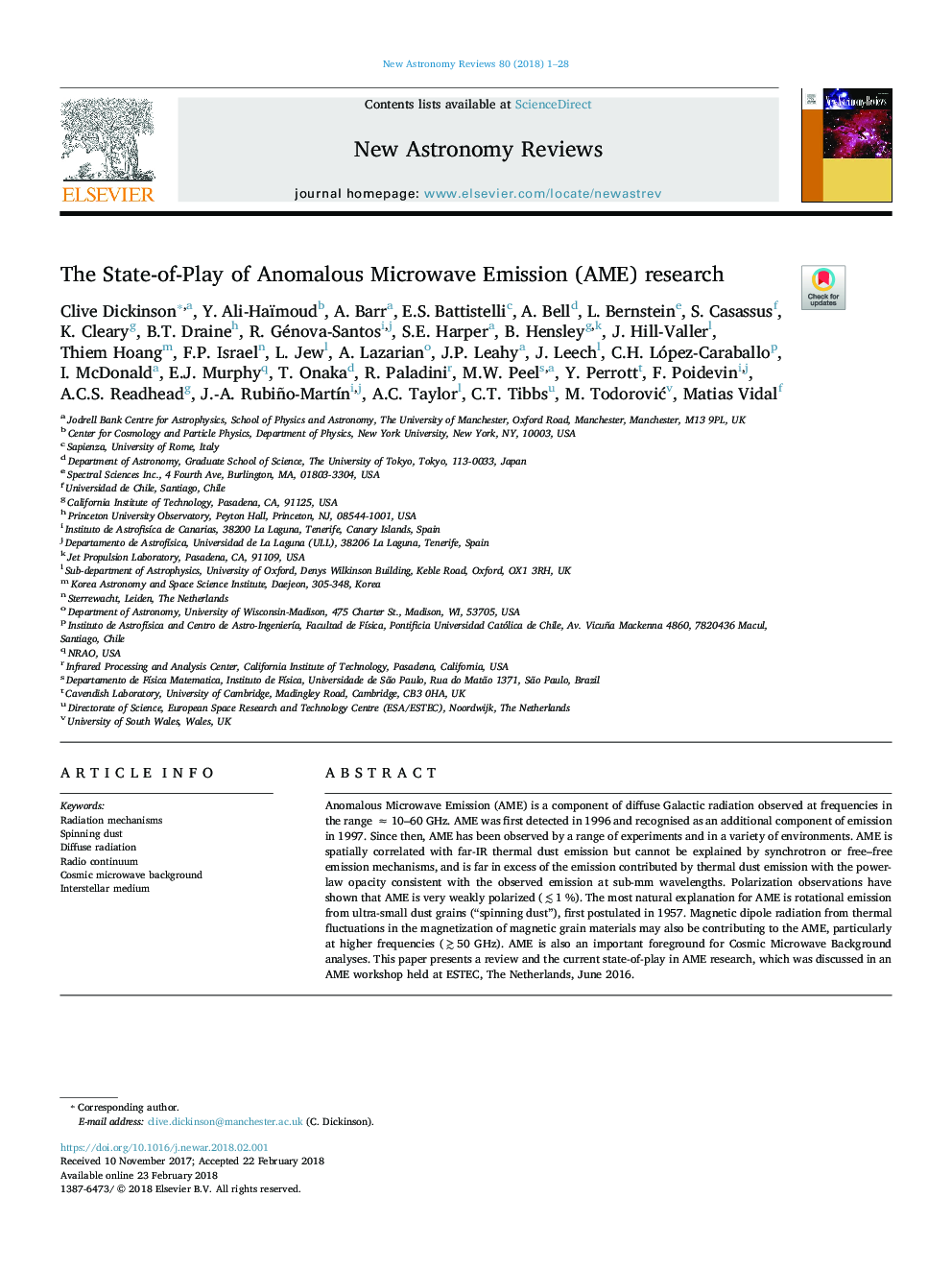| Article ID | Journal | Published Year | Pages | File Type |
|---|---|---|---|---|
| 8141549 | New Astronomy Reviews | 2018 | 28 Pages |
Abstract
Anomalous Microwave Emission (AME) is a component of diffuse Galactic radiation observed at frequencies in the range â¯ââ¯10-60 GHz. AME was first detected in 1996 and recognised as an additional component of emission in 1997. Since then, AME has been observed by a range of experiments and in a variety of environments. AME is spatially correlated with far-IR thermal dust emission but cannot be explained by synchrotron or free-free emission mechanisms, and is far in excess of the emission contributed by thermal dust emission with the power-law opacity consistent with the observed emission at sub-mm wavelengths. Polarization observations have shown that AME is very weakly polarized (â¯â²â¯1 %). The most natural explanation for AME is rotational emission from ultra-small dust grains (“spinning dust”), first postulated in 1957. Magnetic dipole radiation from thermal fluctuations in the magnetization of magnetic grain materials may also be contributing to the AME, particularly at higher frequencies (â¯â³â¯50 GHz). AME is also an important foreground for Cosmic Microwave Background analyses. This paper presents a review and the current state-of-play in AME research, which was discussed in an AME workshop held at ESTEC, The Netherlands, June 2016.
Keywords
Related Topics
Physical Sciences and Engineering
Physics and Astronomy
Astronomy and Astrophysics
Authors
Clive Dickinson, Y. Ali-Haïmoud, A. Barr, E.S. Battistelli, A. Bell, L. Bernstein, S. Casassus, K. Cleary, B.T. Draine, R. Génova-Santos, S.E. Harper, B. Hensley, J. Hill-Valler, Thiem Hoang, F.P. Israel, L. Jew, A. Lazarian, J.P. Leahy, Matias Vidal,
